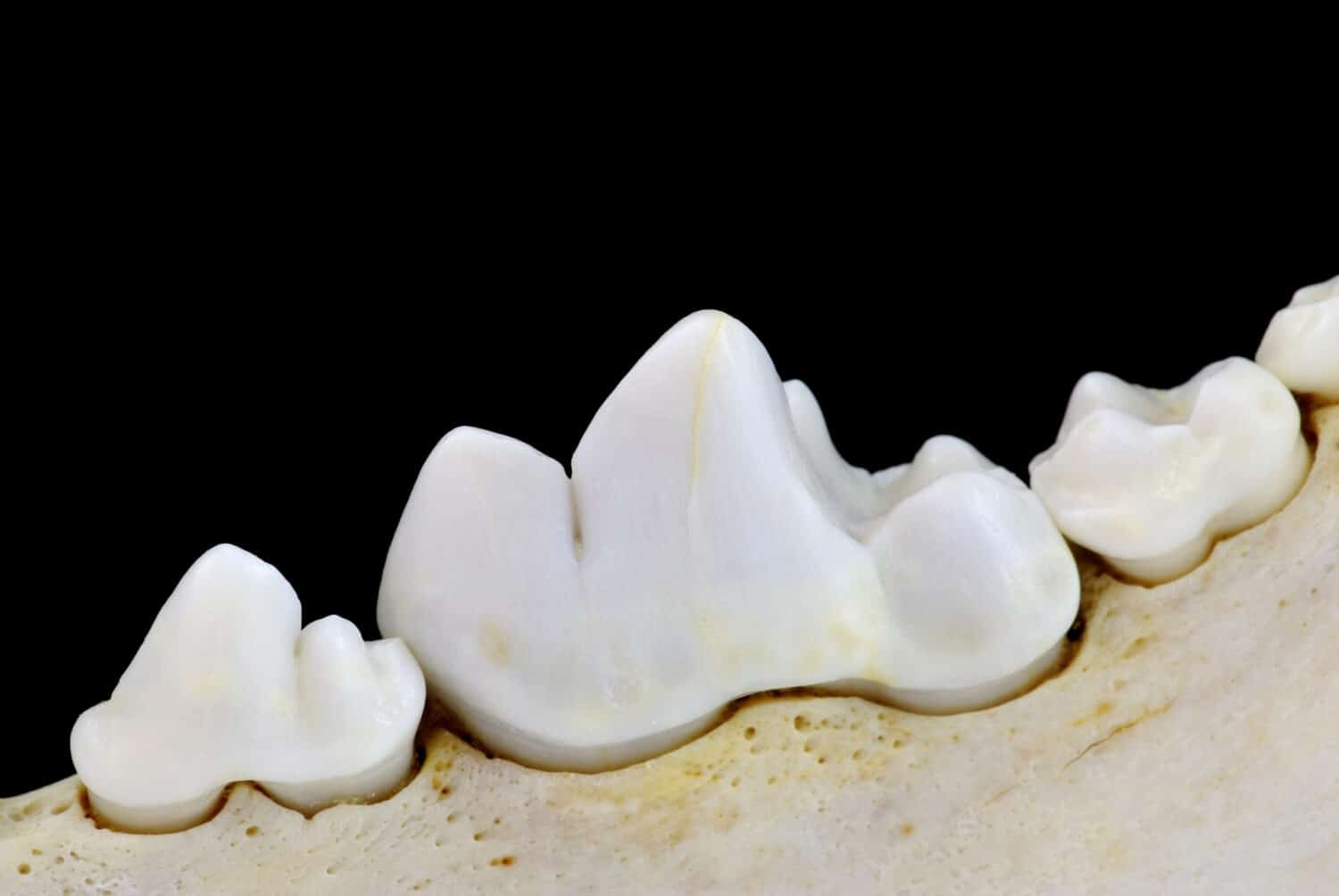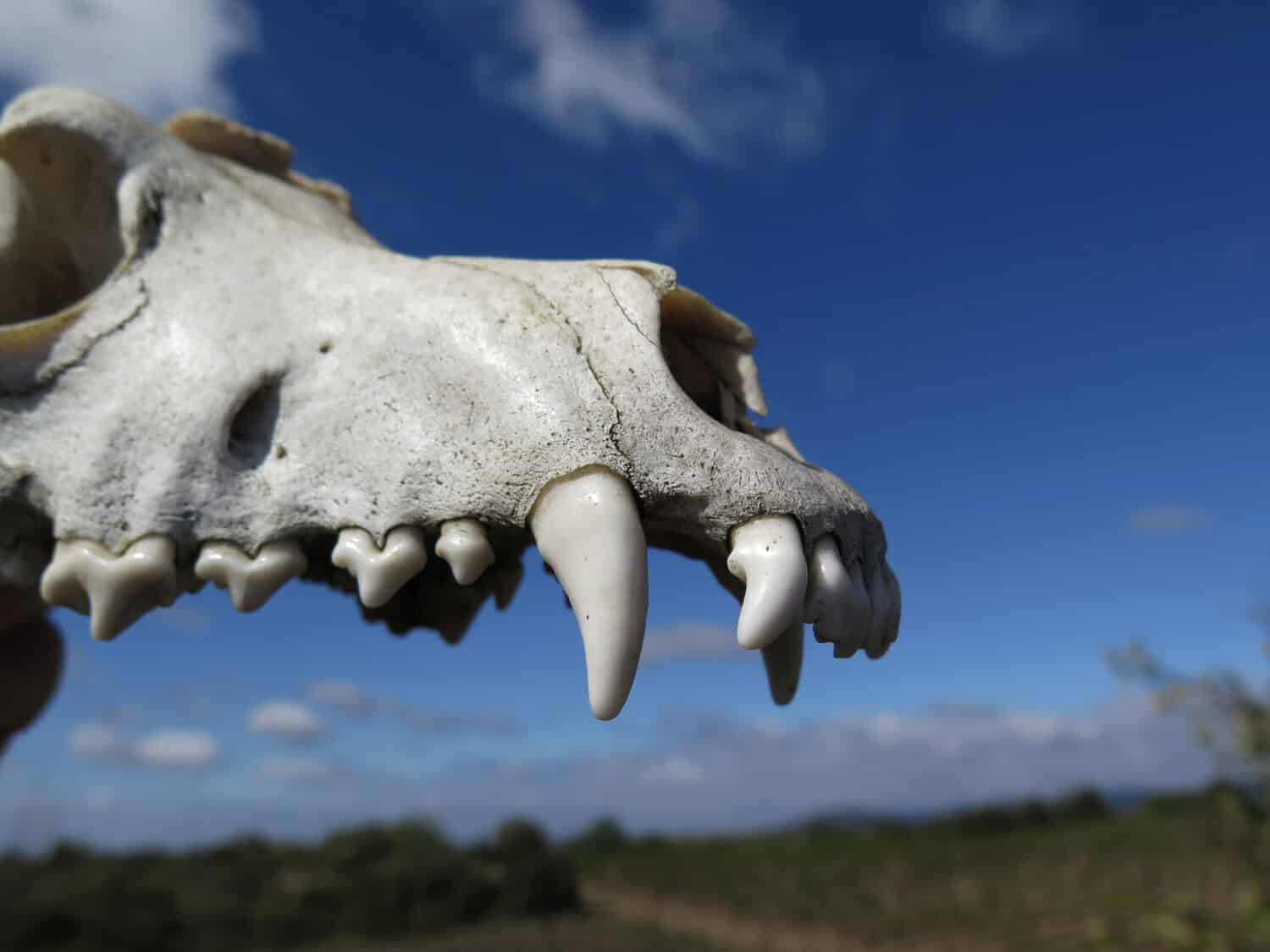Carnivorous animals primarily possess a tooth known as the “cheek teeth,” often referred to as the carnassial tooth. Many carnivores possess this tooth, but the canine (dog) species associates with carnassials more frequently than any other.
What is a Carnassial Tooth?
There are two carnassials on most carnivores, one located on each side of the upper jaw. It’s the largest and most obvious tooth, located in the fourth premolar position. The tooth’s shape allows it to fit perfectly over the matching tooth on the lower jaw, similar to a pair of scissors.
This placement creates a “shearing” effect as the jaws are closed. A carnassial tooth has three roots, while all other teeth have only two or one.

Many carnivorous animals possess carnassial teeth, which are located in the fourth molar position.
©Allocricetulus/Shutterstock.com
What’s the Purpose of the Carnassial Teeth?
As lethal as the tooth appears, it’s not the sharpest tooth in a carnivore’s mouth. It’s designed to break up and essentially pulverize hard food or something denser, such as bone. For the shearing effect, the upper carnassial must close over the lower tooth, and the jaw must be fully closed.
What Animals Have Carnassial Teeth?
The assumption is that carnivores all have carnassial teeth. The truth is, only most carnivores have it, while some do not. For instance, raptors are carnivorous but don’t have any teeth at all. Although bears are omnivores, people often perceive them as highly carnivorous.

Noted the position of the carnassial tooth on this dog’s skull. It’s the fourth and largest of the molars.
©Malpolon/Shutterstock.com
They lack carnassials, instead using a modified molar that’s much larger and more square-shaped. Animals with carnassial teeth tend to be carnivores and some are less obvious than others.
Pronunciation
Carnassial is pronounced kahr – nas – ee – uh l



